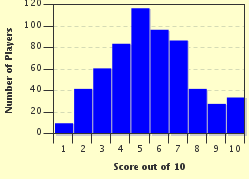Quiz Answer Key and Fun Facts
1. The enzyme salivary amylase begins breaking down this type of food in the mouth.
2. What type of muscle movement is required by the esophagus to move a bolus (ball of chewed or liquid food) to the stomach?
3. When the bolus enters the stomach a number of enzymes are secreted including pepsin and alkaline mucus. What is the function of pepsinogen?
4. After being processed in the stomach the bolus changes chemical composition and its name. What is it called when it moves out of the stomach into the small intestine?
5. Where are fats digested and what breaks them down?
6. What is the total volume entering the small intestine per day? Total volume includes foods, drinks, saliva and digestive juices.
7. What type of muscle movement occurs in the colon to move the contents towards the rectum?
8. What purpose does the appendix serve?
9. What are the only two things that the stomach can absorb?
10. These two things cannot absorb or reabsorb anywhere but the terminal end of the ileum portion of the small intestine. What are they?
Source: Author
nurses-aide
This quiz was reviewed by FunTrivia editor
crisw before going online.
Any errors found in FunTrivia content are routinely corrected through our feedback system.


